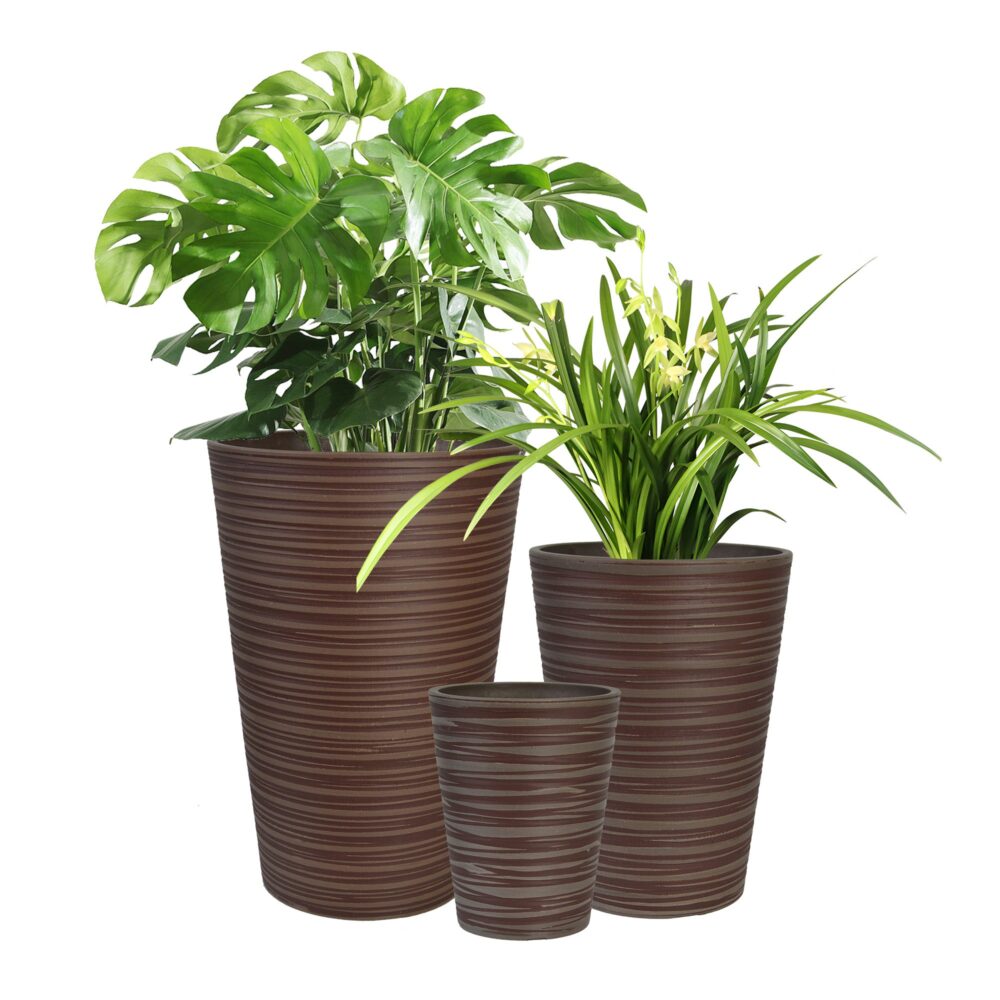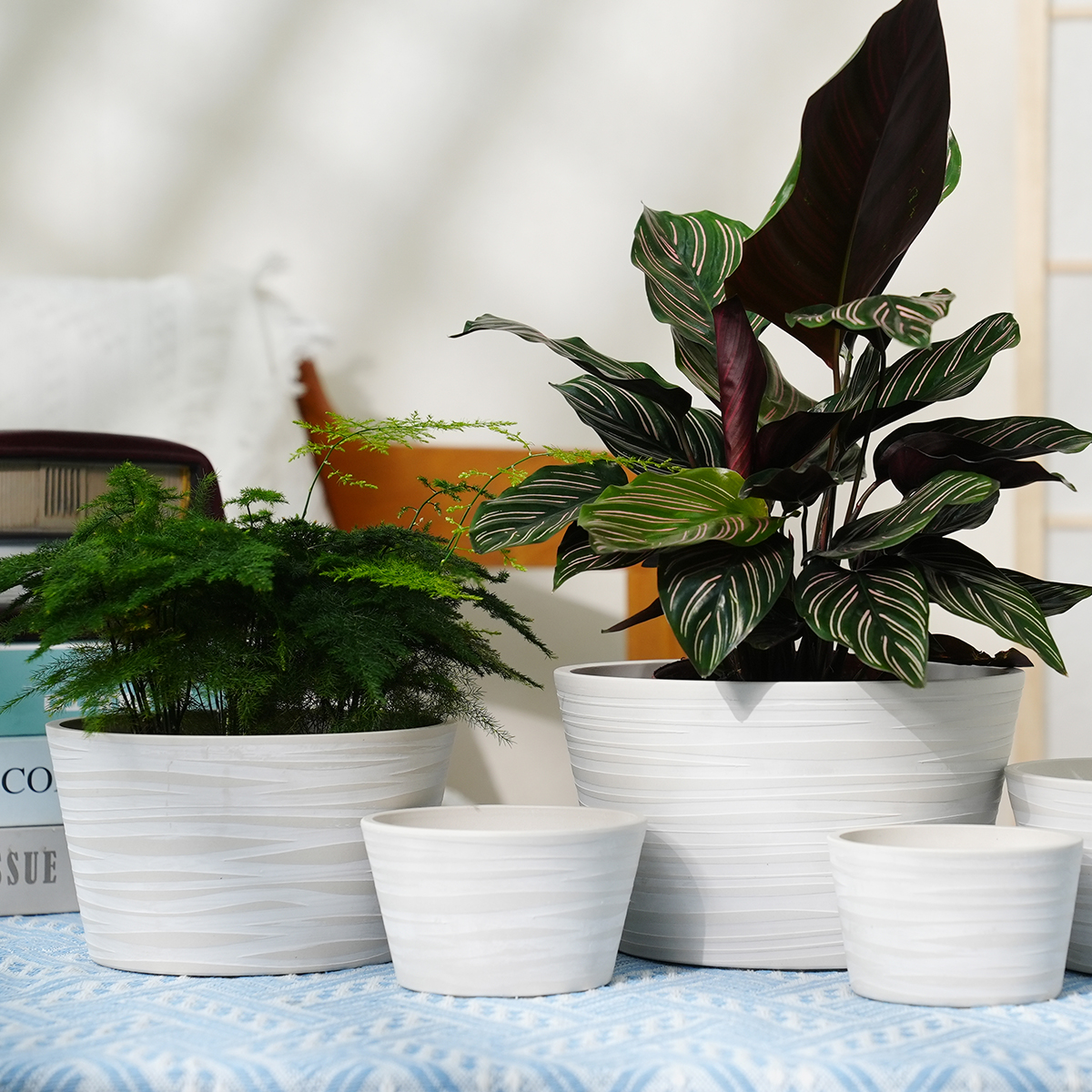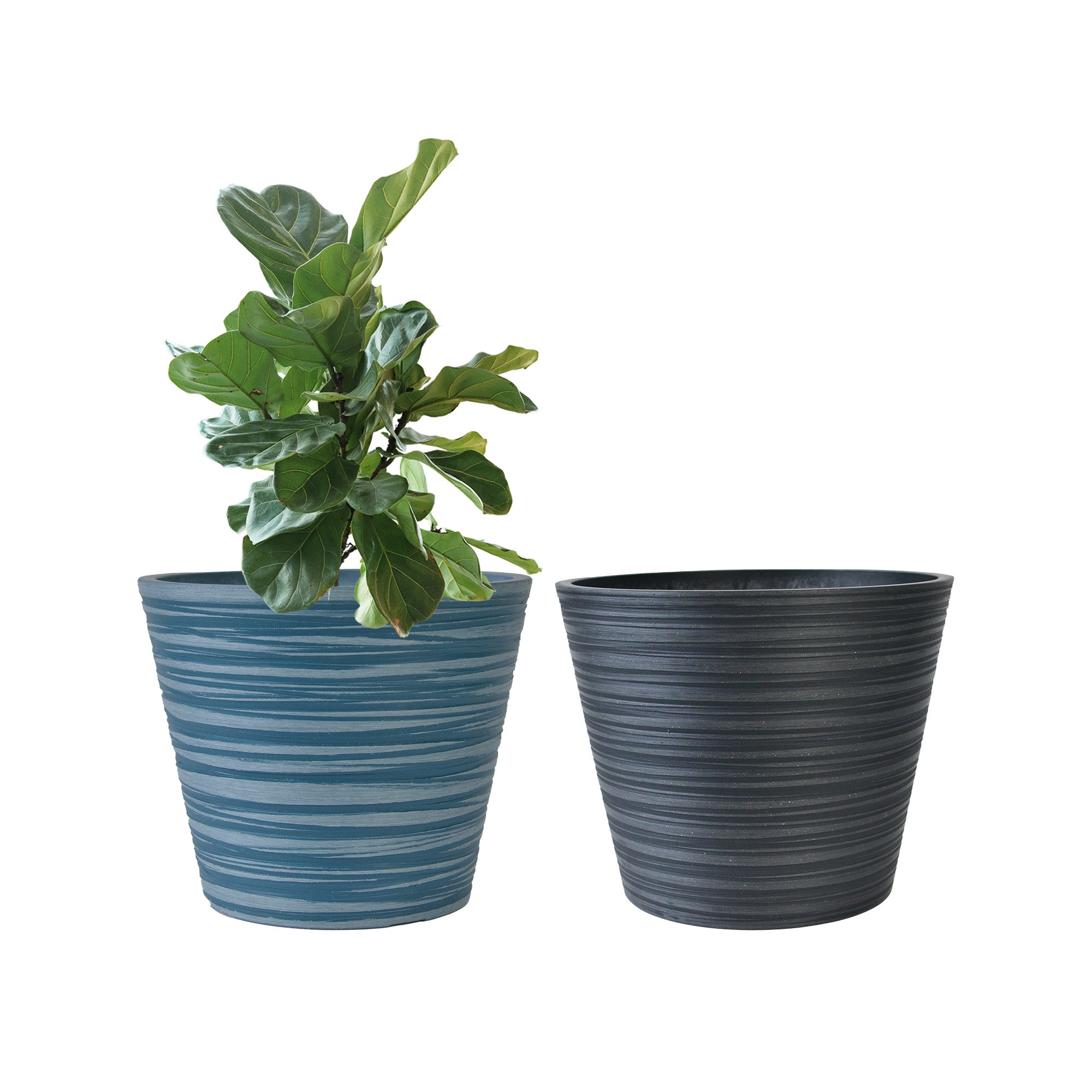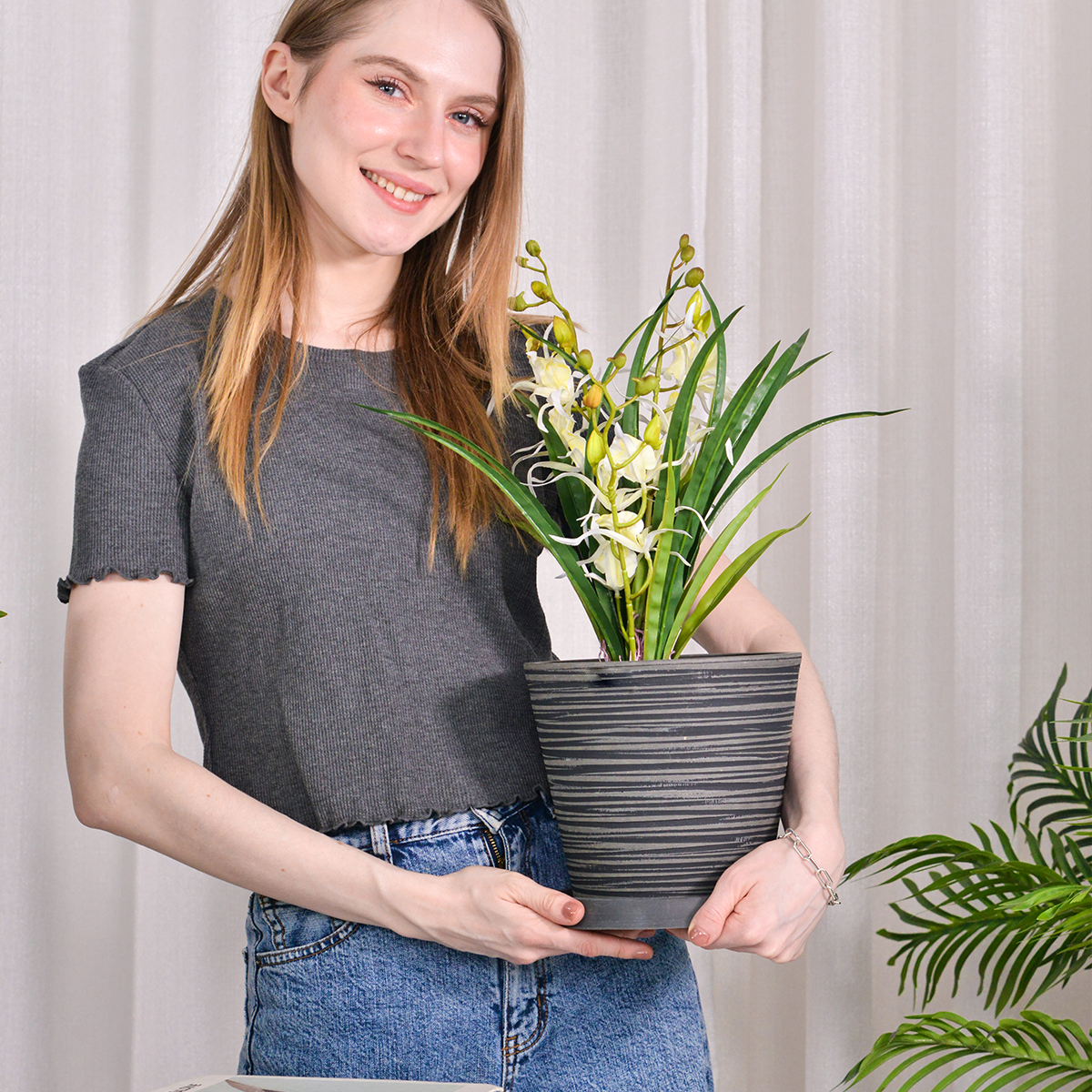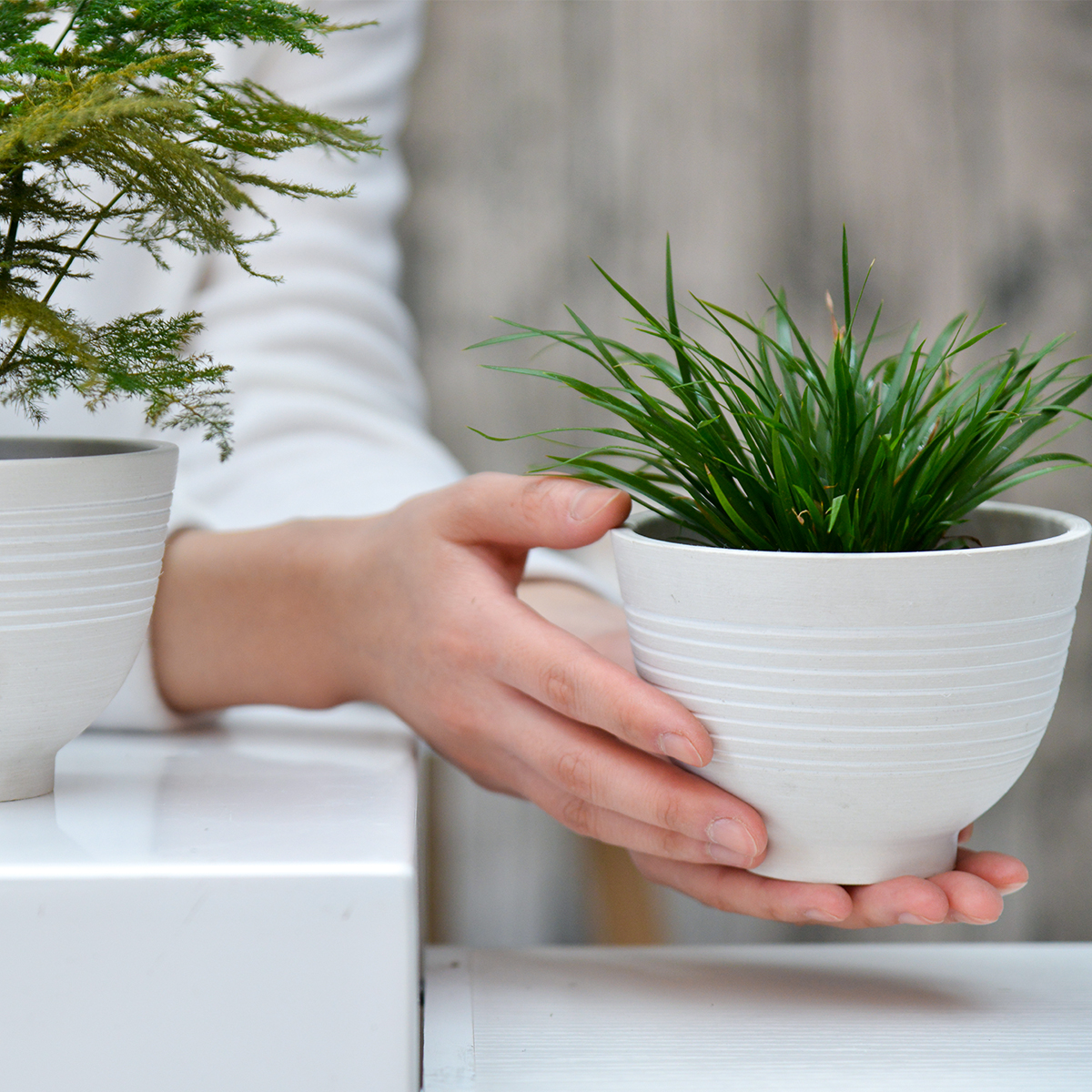How Do I Choose the Right Container Size and Shape Based on the Type and Growth Habit of the Plants I Plan to Grow?
Selecting the appropriate container size and shape is a fundamental aspect of successful container gardening. Providing too little space can stunt growth and lead to stressed plants, while an excessively large container can sometimes hold too much moisture. By understanding the growth habits and root systems of the plants you intend to grow, you can choose containers that will allow them to thrive. Here’s a guide to matching pots to plants:
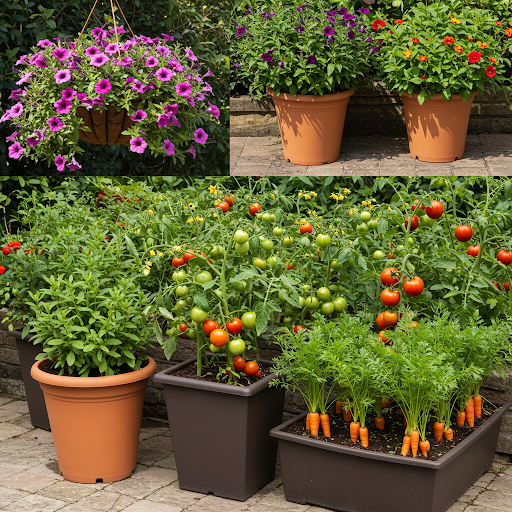
Understanding Plant Growth Habits and Root Systems:
Before you even look at containers, consider the following about your plants:
- Root System: Is it shallow and spreading, deep and taproot-like, or fibrous and extensive?
- Mature Size: How tall and wide will the plant eventually get?
- Growth Habit: Does it grow upright, trail, vine, or bush out?
Matching Container Size and Shape to Plant Type:
Here’s a breakdown of common plant types and the container sizes and shapes that generally suit them best:
- Small Annual Flowers and Herbs (e.g., Petunias, Marigolds, Basil, Thyme): These plants typically have shallower root systems and don’t grow very large.
- Size: 6-12 inch diameter pots or window boxes with a depth of at least 6 inches are usually sufficient. Hanging baskets also work well.
- Shape: Round, square, or rectangular pots are all suitable. Hanging baskets are ideal for trailing varieties.
- Larger Annual Flowers and Bushy Herbs (e.g., Geraniums, Zinnias, Rosemary, Sage): These plants develop more extensive root systems and grow larger overall.
- Size: Opt for pots with a 10-16 inch diameter and at least 8-12 inches deep. Larger planters also work well.
- Shape: Wider pots or planters provide more space for root development and bushy growth.
- Trailing Plants (e.g., Ivy, Sweet Potato Vine, Trailing Petunias): These plants are characterized by their cascading growth habit.
- Size: While root systems may not be very deep, wider containers (10-14 inches in diameter) and hanging baskets provide ample space for spreading. Depth of 8-10 inches is generally adequate.
- Shape: Hanging baskets and window boxes are perfect for showcasing trailing plants. Wider, shallower pots can also work.
- Vining Plants (e.g., Tomatoes, Cucumbers, Climbing Flowers): These plants grow vertically and require support.
- Size: Choose pots that are at least 12 inches in diameter and 12-18 inches deep to accommodate their root systems. Larger planters are also a good option.
- Shape: Taller pots or planters are preferable, especially when combined with trellises or stakes. Square or rectangular planters can also work well with support structures.
- Root Vegetables (e.g., Carrots, Radishes, Beets): These plants need deep containers to allow their roots to develop properly.
- Size: Select pots or planters that are at least 10-12 inches deep. For longer carrots, even deeper containers (18-24 inches) are recommended. Diameter should be at least 6-8 inches per plant.
- Shape: Deeper, narrower pots work well for individual root vegetables. Longer, rectangular planters can accommodate rows of root vegetables.
- Bush Vegetables (e.g., Peppers, Eggplant, Bush Beans): These plants develop a significant root system and bushy foliage.
- Size: Opt for pots that are at least 12 inches in diameter and 12 inches deep per plant. Larger planters can accommodate multiple plants.
- Shape: Wider pots or planters provide ample space for both root and foliage growth.
- Small Trees and Shrubs (e.g., Dwarf Citrus, Japanese Maples): These plants have substantial root systems that require significant space.
- Size: Choose the largest containers you can reasonably manage, starting with at least 15-20 gallon pots (approximately 18-24 inches in diameter and depth) for smaller varieties and going larger for more mature specimens.
- Shape: Wider and deeper pots are generally better for trees and shrubs to allow for extensive root development.

General Guidelines and Tips:
- Start Slightly Larger: When repotting, generally choose a container that is only 1-2 inches wider in diameter than the previous pot. Drastic increases in size can sometimes lead to moisture issues. However, when starting from seeds or small seedlings, ensure the initial pot is appropriately sized for their early growth.
- Consider Mature Size: Think about how large your plant will eventually get and choose a container that will accommodate its mature root system for at least a season or two before needing to be repotted.
- Drainage is Key: Regardless of the size or shape, always ensure your container has adequate drainage holes to prevent waterlogging.
- Match the Pot to the Plant, Not Just Your Space: While aesthetics are important, prioritize the needs of your plants when selecting container size and shape.
- Don’t Over-Pot: While under-potting can restrict growth, using a pot that is significantly too large can lead to the soil staying wet for too long, potentially causing root rot.
By carefully considering the growth habits and root systems of your plants, you can select the right container size and shape to ensure their health and encourage vigorous growth in your container garden.
Modern Plant Pots with Drainage – Indoor & Outdoor Use (6″ Widths)
By greenship-seo|2025-04-10T06:29:43+00:00February 6, 2025|Categories: Hand-carving Series|Tags: Decorative Flower Pots|
HS
By greenship|2024-08-13T06:45:17+00:00August 13, 2024|Categories: Hand-carving Series|
Planter 5 in W / 8 in W / 12 in W or Indoor Outdoor Plants, Modern Decorative Plant Pots with Drainage Hole, Decorative Flower Pots
By greenship-seo|2025-04-10T06:37:58+00:00January 16, 2025|Categories: Hand-carving Series|Tags: Decorative Flower Pots|
K2-11T
By greenship|2024-08-13T04:21:25+00:00August 13, 2024|Categories: Hand-carving Series|
KC3-14A
By greenship|2024-08-16T06:26:30+00:00August 16, 2024|Categories: Hand-carving Series|
Planter for Indoor Outdoor Plants, Set of 2 Modern Decorative Plant Pots with Drainage Hole, Decorative Flower Pots
By greenship-seo|2025-04-10T07:46:01+00:00January 9, 2025|Categories: Hand-carving Series|Tags: Decorative Flower Pots, Self-Watering Pots|

